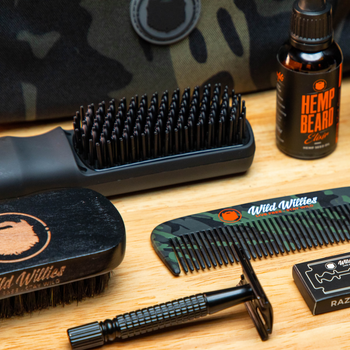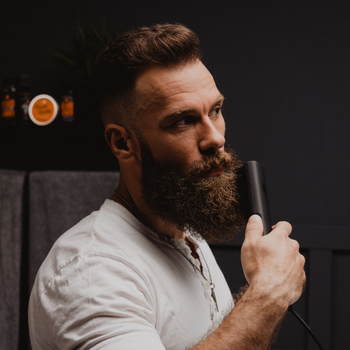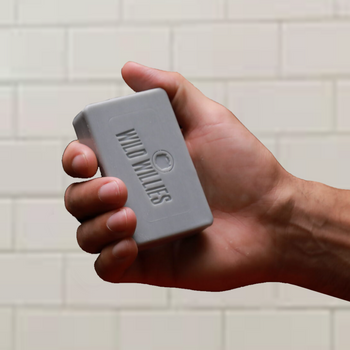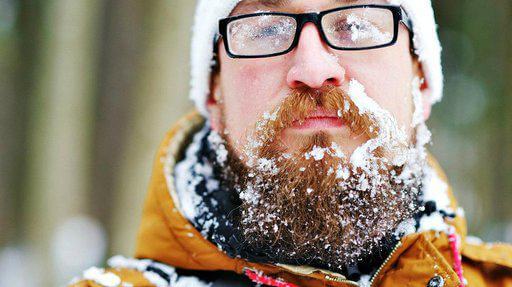
Do you have an itchy beard? Here are 7 steps you can take to help stop beard itch.
7 Easy Steps To Help You Deal With That Itchy Beard
Step 1: Determine The Cause Of Your Itchy Beard
The first step in stopping beard itch is knowing what causes it. One of the most common reasons why a lot of men fail to grow their beards is the incessant itch that often comes with it. Beards tend to be most itchy during the first 2-3 weeks of growing. Regular shaving leaves the hairs with a sharp edge. These edges tend to scrape against the follicles as they grow, making it itchy. For some, getting over the stubble phases of their beards also means the end of their itchy beard problems.
However, without proper care, itchy beards also trouble those with full-grown beards. Improper hygiene leads to numerous beard problems such as dry skin, beard dandruff, and wiry and tangled hair. These problems can, in turn, cause that itchy beard. Keeping both your beard and the skin underneath healthy, soft, and moisturized is the solution you need.
Step 2: Wash Your Beard
Washing your beard is, perhaps, the most important step in keeping your beard itch-free. Your mane tends to act like a net. It catches and traps dirt, oil, food, and dead skin cells. These foreign materials irritate your beard and the skin underneath, causing the problems we mentioned above. What is worse is that scratching it only aggravates the problem. The solution? Wash your beard with warm water and shampoo.
Keep in mind using a specially-formulated beard shampoo is a must. Using traditional hair shampoo or body soap on your beard can do more harm than good. These products are often too strong for the hair and skin on your face. They strip your face of its natural oils, causing it to become dry and itchy.
Additionally, washing your beard too often can mess it up. Experts advise beard washing to be limited to only 3-4 times a week. If your beard becomes too dirty during the intervals, wash it with warm water and be sure to dry it with a towel afterwards. Water that is too hot can also dry the skin and the beard.
Use a beard shampoo. The best ones contain only natural ingredients that help keep your beard clean and strong without drying it out. They nurture your beard and, for those with beards that may have been damaged, help restore it to its former glory.
Step 3: Condition
After washing your beard, it is equally important that you keep it soft. Similar to the hair on your head, your mane also needs conditioning, hydrating, and moisturizing.
Using a beard conditioner after washing helps keep your beard at its best. Beard conditioners help thicken and soften the beard. They keep it moisturized and hydrated, preventing dry skin and dry hair. In turn, this strengthens the hair and reduces split ends, breakages, and tangles that can result in an itchy beard.
Choose a beard conditioner that contains only natural ingredients. Facial hair and skin can be very sensitive. Beard conditioners with artificial ingredients may cause damage to the beard and skin underneath.
Also, remember not to use conditioners that are for the hair on top of your head. Similar to beard shampoos, these can cause more harm than good.
Step 4: Moisturize

The next step towards an itch-free beard is to moisturize it.
When growing their beards, most men focus too much on getting the hair as thick and as long as possible. They make the mistake of forgetting the skin underneath the beard. Taking care of this and moisturizing your beard is just as important because it serves as the canvas to the masterpiece that is your beard.
Dry skin forces the body to produce more oil or sebum, leading to itching, breakouts, and acne. Keep the hair and the skin underneath moisturized with the help of beard balm or beard oil. While beard balm and beard oil have some differences, they both function to maintain moisture in the beard. They are designed to keep it looking fresh and nourished. Plus, they can also help you in styling it.
For your mustache, it is best to use Beard Butter . This product works similar to beard balm and beard oil but is specially designed for your ‘stache. Again, choose products that contain natural ingredients only. Avoid those that have chemicals and other fragrance or colorants that can damage your beard.
Step 5: Trim
Growing out your beard does not necessarily mean that you do not touch it. Just like a lawn, it also needs to be trimmed to keep it looking smooth. Grow it out enough for it to develop the thickness and volume you want. Make sure that if there are any patchy areas, the beard has grown enough to cover those, too.
Afterwards, trim your beard with a pair of scissors. A beard shaping tool can also help you maintain the shape and keep it within the contours of your face.
Trimming your beard not only keeps it styled, it will also allow you to spot any ingrown hairs which can also lead to an itchy beard. Pull these hairs out using clean and disinfected tweezers. Often, you will see them marked by a little red bump on your skin.
Step 6: Comb and Brush
Combing or brushing your beard is an under-appreciated way of grooming your beard.
More than training your beard to grow in a certain direction, brushing and combing your beard has a ton of other benefits.
For one, if you really cannot resist scratching your beard, you can comb or brush it. This acts like a massage for your beard and your chin, allowing you to “scratch” it in a healthier way.
Additionally, using a beard brush or a beard comb on your beard allows you to evenly spread natural oils across your beard. Upon applying beard oil or beard balm, it is also advisable to use these to help evenly distribute the product across the beard.

Sign Up For The Wild Willies Newsletter.
Because we all should know what it takes to be the best-groomed man.
As much as possible, use these before and after washing your beard. Using it before removes dirt and debris that washing alone cannot, while using it after washing and applying beard balm or beard oil helps you spread the product evenly.
Step 7: Eat And Live Healthy

Finally, eating a healthy and balanced diet accompanied by a healthy lifestyle should be your final step towards freedom from an itchy beard.
Other factors such as stress and a poor diet can contribute to beard problems.
Exercising and maintaining a proper diet can work wonders for your beard. They do not just keep you looking fit, they can also be good for your mental and emotional health.
Exercising is one of the best ways to fight stress, lowering the chances of any beard problems that might lead to an itchy beard. Eating meals rich in proteins, vegetables, and fats can also promote healthy and strong beard growth. Essential omega-3 fatty acids, Vitamin B12, and iron are also known to help fix dry scalp and boost hair color, while vegetables rich in Vitamins A and C help boost the production of sebum, keeping the hair strong and moisturized.
An itch-free beard is sometimes enough, but having these accessories must-haves suggestion by Alex Costa can boost that confidence more:
An itchy beard is one of the most annoying things you can experience when growing a beard. Fortunately, the solution does not always have to be shaving the entire thing off. Hopefully, our guide taught you how to get rid of an itchy beard.
Do you have other questions about how to treat an itchy beard? Ask us in the comments section below!
Up Next: Tools To Shape And Trim Your Beard At Home Like A Pro







